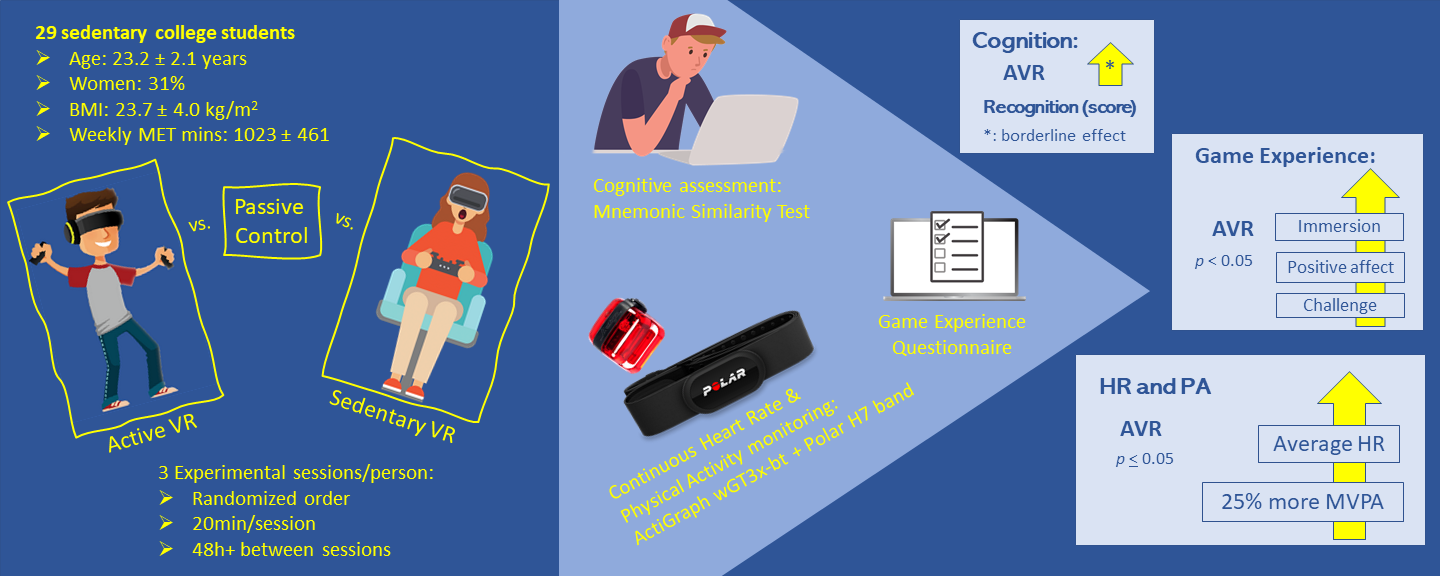Research by six members of the Northeastern community was recently published in a special issue of the Journal of Sport and Health Science (Impact Factor: 5.2) highlighting the application of E-health programs in physical activity and health promotion. The study entitled “Active video games in fully immersive virtual reality elicit moderate-to-vigorous physical activity and improve cognitive performance in sedentary college students: VR elicits MVPA and improves cognition,” was published in May 2021.
The study was led by Dr. Amy Lu, Director of Health Technology Lab and Associate Professor for both the College of Arts, Media and Design and the Bouvé College of Health Sciences. Postdoctoral Research Associate, Dr. Caio Victor Sousa and research assistants Romina Cabrera-Perez, Austin Fernandez, Aika Misawa, and Kelsey Newhook worked alongside Dr. Lu. Their efforts were supported by Dr. Jungyun Hwang from the Department of Aging and Geriatric Research at the University of Florida.

The idea for this research was born in the winter of 2019 when Dr. Lu was walking past the Snell Library and saw a television showing Beat Saber, a VR rhythm video game, through the window. A rhythm game uses music to notify players when to take action (i.g. push a button, swinging a controller, perform a dance sequence) in time with beats and notes. Following a discussion about e-health programs, the team was excited to explore this evolving game category. After testing multiple VR games, the researchers ultimately chose Beat Saber to be used as a testing tool in this study.
The study found that when compared with sedentary virtual reality (SVR) gameplay, active virtual reality (AVR) gameplay induces heart rate increases and moderate to vigorous physical activity (MVPA). Research also demonstrated that active virtual reality elicits greater sensory and imaginative immersion, challenge, and positive affect, as well as a marginally better performance in a memory test when compared to sedentary virtual reality. Motion sickness was found to be low in both AVR and SVR game conditions. Researchers revealed that active virtual reality has the potential to positively affect MVPA and cognitive health.
“I am glad that we were able to empirically demonstrate these physical and cognitive benefits from a single 20-minute bout of exercise using an active VR game. Active VR games, like many other active games (or exergames), would be a great alternative source of exercise to people who are increasingly using more sedentary media and getting less active, especially for those without a good outdoor environment for physical activities or those with mobility issues or during quarantine periods, like the past year,” explained Dr. Lu.
Looking ahead, the researchers would like to investigate the elements of VR games that motivate players to engage in physical activity. They also hope to record how players’ reactions towards changes inside the VR environment impact their behavioral and physiological responses. Examples of potential changes include, but are not limited to, player perspective, avatar design, and the integration of character backstories. The team is currently working on a meta analysis to further explore the cognitive benefits of VR exercise.
View this 9-minute video to learn more about the study.


